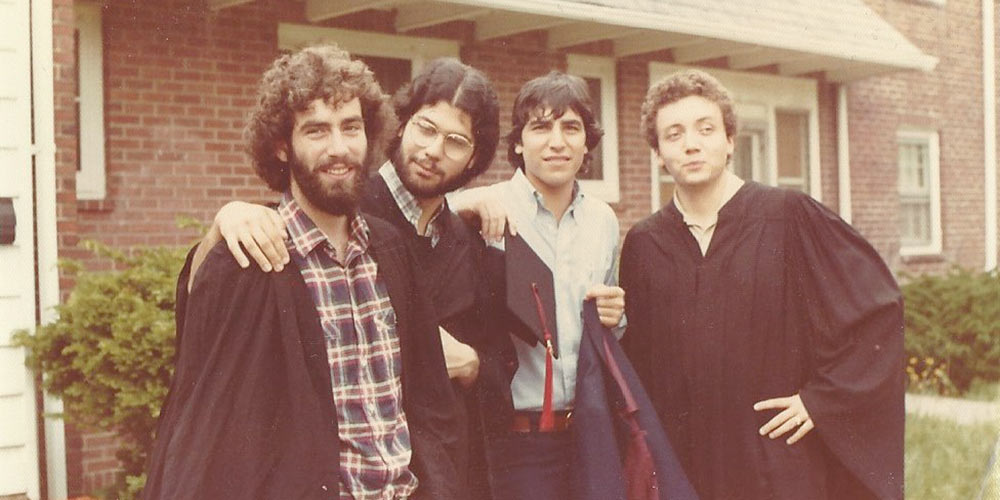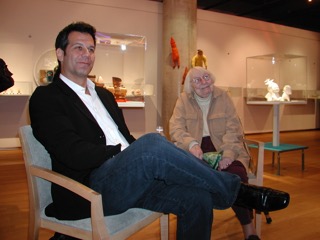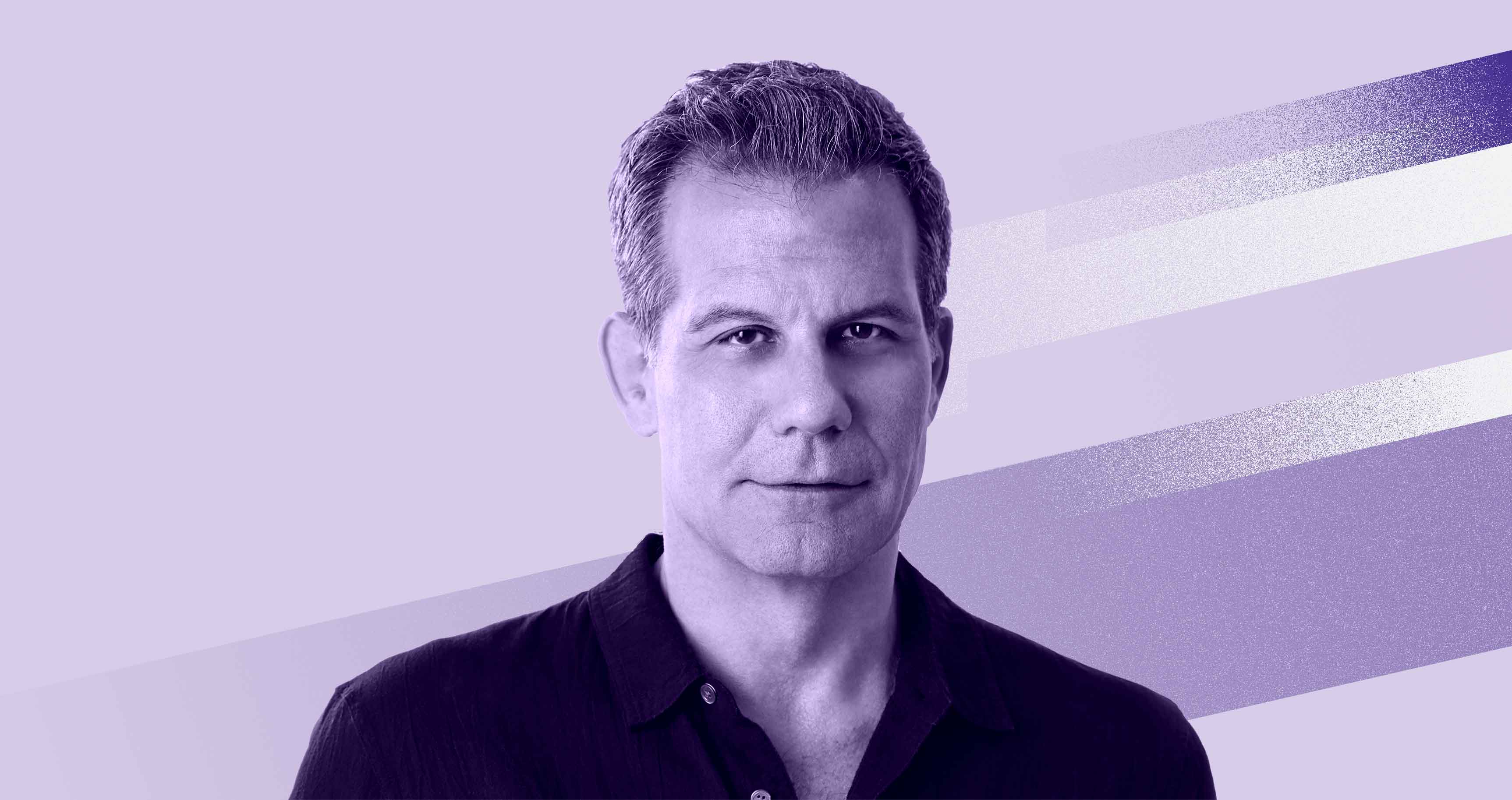Top Hat is the active learning platform that makes it easy for professors to engage students and build comprehension before, during and after class. This interview is part of our recurring series “Academic Admissions” where we ask interesting people to tell us about the transformative role education has played in their lives.
For more than a decade, Richard Florida was an obscure urban planning academic with a PhD from Columbia (1986) and a handful of unheralded writing credits to his name. Then, in his 2002 book The Rise of the Creative Class, Florida chronicled how a particular category of people—those whose work is primarily intellectual, from architects to engineers to academics to artists of all stripes—had become the driving force behind the renewal (or decline) of North American cities. The book became an international bestseller; its ideas have reshaped the way academics understand cities, and the way politicians run them.
In a wide-ranging interview, Florida—now the Director of the Martin Prosperity Institute at the University of Toronto’s Rotman School of Management—explains how his ideas about cities were forged by a jarring childhood experience in his hometown of Newark, New Jersey; by a field trip he made, alone, on assignment for his first undergraduate professor in urban geography; and by one of his earliest academic postings in post-industrial Pittsburgh.
Childhood, interrupted
I was born in Newark. My dad worked at the Victory Optical factory making eyeglass frames, and we lived in the Italian district of Newark. My parents had a rental apartment overlooking Branch Brook Park. Later we moved close by to North Arlington, New Jersey, because of the Catholic school, Queen of Peace, where my brother and I went. It’s the suburb that’s featured in the opening credits of The Sopranos.
I wanted to be a rock and roll guitar player, and I begged my dad to buy me a guitar. He actually did: He bought me a Gibson ES-345 in 1967, a guitar like BB King and Eric Clapton played. It was a lot of money for a factory worker. I have it ’til this day. He said, “I’m gonna make a deal with you. One, you’re gonna go to the library”—my dad had a seventh-grade education, but he was a very smart man—“and two, you’re gonna take guitar lessons.” I agreed.
One day in Newark in 1967, a hot day in July, my dad was driving me to my guitar lesson in downtown Newark, and suddenly gunshots rang out. My dad said, “Duck down on the floor, Rich.” From the car seat I could see buildings on fire. A police officer came up to the car and told us to turn around and get out of the city. The National Guard in their military vehicles were occupying the city. Then when we went home and turned on the TV, it was all over the nightly news. Newark had broken out into race riots, one of the worst to ever take hold in America. I was trying to make sense of it. Why were people rioting? Why was Newark up in flames? Why were black people so angry?
I think when you see the city of your birth on fire, and you see race riots, and you see a military occupation, it makes an impact.
That event, and its aftermath, was a formative event in my life. I never said, “Dad, I wanna become an urbanist,” but I think when you see the city of your birth on fire, and you see race riots, and you see a military occupation, it makes an impact. After it had all abated, when my dad would take me to the library I started to search the stacks for books on urbanism. I remember seeing books by people like Jane Jacobs or Daniel Patrick Moynihan or Nathan Glazer. I was in high school by this time, but I found myself very captivated by this kind of writing and being drawn to it.
Getting outta Dodge
In the years after the riots, Newark was abandoned by much of its industry, and by much of its affluent population. It became a depopulated, largely minority, poor city. And as the end of high school approached, some of the kids I grew up were drawn into a “mini Sopranos” kind of life—engaging in petty crime, dealing drugs. By the time they were 17, they were not the same as they were at 14. I don’t quite know how to describe it, but in that three-year period they went from being these lovely and nice but perhaps troubled kids to being really difficult, dangerous people. And I realized “smart kids” like me got beat up all the time. I ranked in the top eight of my graduating class, but no one knew. The rock band I was in was my cover. Everybody just thought I was this rock and roll kid with long hair and a stringy beard.
At age 17 I hit the education jackpot. I was awarded a Garden State Scholarship, which can be used across the entire state university system, and I got admitted to Rutgers. It meant I could get outta my hometown—Rutgers’ New Brunswick campus was less than an hour’s drive south. Once I went to Rutgers, I learned the difference between a working-class and a middle-class upbringing. In the working class, you told people the truth and you didn’t lie, and then you fought. We fought almost every day. In the middle class everybody told white lies, no one ever fought, and no one beat you up for being smart.
SoHo awakening

Rutgers was really the turning point for me. My parents wanted me to be a doctor—the professions really resonate with Italians—and they really prevailed upon me to study pre-medicine, but it became clear to me that my aptitude was not in science. I told my parents I was switching to law, and the next term I took political science, economics, sociology and I found this course in urban geography. Don’t ask me how I found it, I just found it in the course catalog.
The professor’s name was Bob Lake. He’s still a professor at Rutgers. He’s a fantastic guy. He gave us an assignment: get on the Amtrak train from New Brunswick and go to Lower Manhattan, then walk from Penn Station through the west side—through Chelsea, through the Meatpacking District down to SoHo, Tribeca, Flatiron.
This was Lower Manhattan in early 1976: And I could not believe what I was seeing. It was really the best of times and the worst of times. Economically the city was in decline. New York City had just been declared bankrupt. But culturally, especially in terms of popular culture, New York was the place to be. It was filled with bohemians, new wavers, artists, and punk rockers. The artists were colonizing SoHo and the manufacturers were trying to keep them out.
I saw the grit and grime and this up-from-the-bottom creative thing that was happening in New York then, and I just couldn’t believe it. I was like, “This is some other world.” I was seeing a city full of creative energy. It was so different from the decline I had seen in Newark. I didn’t know this world existed, even though I grew up less than ten miles away from it. That’s the day I was hooked.
Marxist phase
There was another fantastic professor at Rutgers named Stephen Bronner, and he taught in the evening program, which was good for me because I didn’t like to get up early. I was still playing in rock and roll bands. He taught courses in the history of communism and socialism and in contemporary political theory, starting with Marx and Marx’s disciples. That combination of ideas—urbanism and Marxism—was amazing to me. I became captivated by Marxian analysis of urbanism.
And so through Bob Lake, my geography prof, and Stephen Bronner, my professor of political theory, I really found my intellectual interest. Bob Lake also had a role with The Center for Urban Policy Research. In my sophomore year he gave me a summer job working for him on a research project, and I just loved it. I continued to work there as a research assistant throughout my whole undergraduate career.
We had an honor’s program at Rutgers, Henry Rutgers Scholars. I wrote this very turgid Marxist analysis on the political economy of housing and urban development that you can probably find at Rutgers’ library. It’s filled with white out and correction tape because I’m a hunt and peck typer and there were no personal computers at the time. I was trying to make sense, in a very crudely Marxian way, of the political economy of urbanism.
I started graduate school in political science and urban planning at MIT, and I did well academically, but Cambridge and Boston were a world away for me and I had no support system. So I came home, took a year off, then transferred my credits to Columbia University in their urban planning program.
After graduating I took my first faculty position at Ohio State, where I met this very fascinating guy named Martin Kenney. Kenney was an assistant professor of rural sociology and a brilliant guy, and we ended up writing a couple of books together. The academic question of the day was this: America had these (Henry) Fordist industrial centres with big factories across the country, and now Fordist mass production in suburbs, but it was in decline, and what kind of capitalism was coming to replace Fordism? What would a post-Fordist America look like? We spent three years together at Ohio State working on that, looking at places like Silicon Valley and what was happening in Japan with their industries at the time. That was a big formative intellectual time for me.
The spark of the creative class
I moved to Pittsburgh in 1987 to join Carnegie Mellon University. I got caught up in the midst of Pittsburgh’s deindustrialization and its economic transformation—seeing the attempt to rebuild Pittsburgh around high-tech companies that are being spun off from places like Carnegie Mellon. But those companies—and the talent that was building them—weren’t staying in Pittsburgh. They were leaving. My own students were leaving. I had to figure out why. Most academic thinking to that point, including my own, was that companies drove economic growth, and that the location decisions of large companies powered urban economic development. And so my work was now beginning to look at these districts of high technology companies, and trying to make sense of why places like Pittsburgh weren’t performing.
One day, it just hit me like a ton of bricks, and it sent shivers up my spine: it wasn’t about companies, it was about people. I went back and I asked my students at Carnegie Mellon, “How many of you will be here next term? How many of you guys will locate to Pittsburgh if you have a great job offer?” Not one hand went up. They all said, “No, I’m going to Boston, I’m going to San Francisco, I’m going to Austin, I’m going to New York City, because I want to be in a place that’s exciting, has energy.” This stuff just poured at me.
That’s when I realized I had to look into how people are choosing locations, and how those individual choices affect these locations. That was the idea of talent. I didn’t call it the creative class for a long time. But when we did the research, we could see the growth of this group of techies, knowledge workers, professionals, artists and cultural creatives over time. The creative class went from five percent of the workforce in 1900, to ten in 1950, and exploded from 15 percent in 1980 to nearly a third by the year 2000. And it varied tremendously across places. In some cities and metro areas, like San Francisco it could be more than 40 percent, in others it could be 20 percent or less.

So that’s when I wrote Rise of the Creative Class and the rest, as the say, is history. All along my work was shaped by what I learned in my formative years stimulated by what I saw in Newark, and then trying to make sense of Pittsburgh.
My interests have always been both intellectual and pragmatic. It was not just great academics that were my role models, it was thinkers like Karl Marx, or Joseph Schumpeter, or Jane Jacobs, or Peter Drucker—some of whom were university professors, and many of whom were not.
When I walked into Basic Books and signed my first book deal, the sign on the wall said something like “great works of nonfiction by journalists, researchers, and public intellectuals.” And I was like, “That’s what I want to do.” So I think I’m very fortunate that I’ve had these dual interests- being an academic and a public intellectual who tries to communicate those ideas and the ideas of others about cities and urbanism to a broad public.
This interview has been condensed and edited for clarity.


